The Visual Guide to
Ovine Reproduction
- Lambing Facilities
- Normal Lambing
- Early Signs of Labor
- Presentation
- Lambing Injuries
- Cesarean Section
- Fetotomy
- Neonate
Obstetrics: Fetotomy
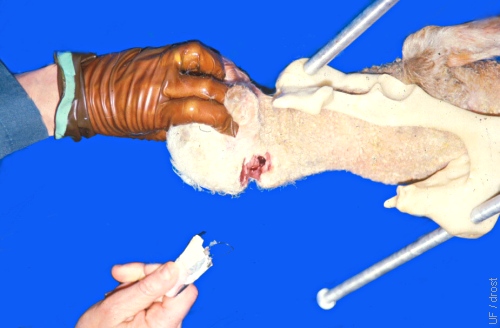
Amputation of the Head.
The lamb is in anterior presentation, in a dorso-sacral position, with an abnormal posture. Both front legs are retained at the shoulders. If the lamb is dead, amputation of the head creates room for manipulation. The neck of the lamb is subsequently repelled into the uterus to facilitate extending one or both of the front limbs to permit extraction.
Smith MC (2006)
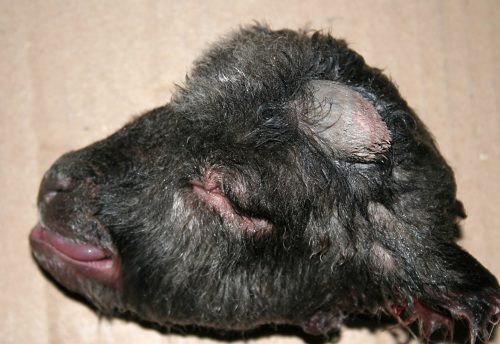
Enlarged Head.
The large hornbuds of this Shetland ram lamb led to a dystocia. Amputation of the head provided room for retrieval of the forelimbs. The neck of the lamb was subsequently repelled into the uterus to facilitate extending one or both of the front limbs to permit extraction.
Smith MC (2010)
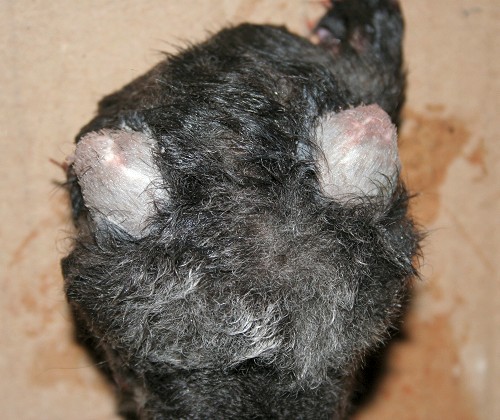
Enlarged Hornbuds.
The large hornbuds of this Shetland ram lamb led to a dystocia. Amputation of the head provided room for retrieval of the forelimbs and delivery of rest of the lamb per vaginam.
Smith MC (2010)
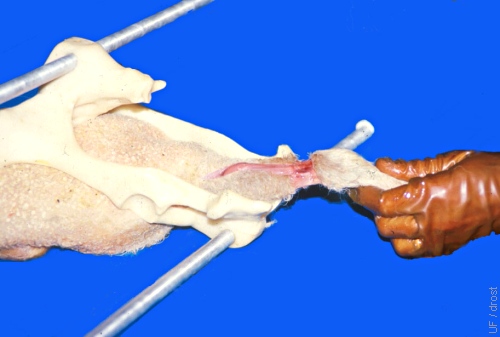
Subcutaneous Fetotomy.
The dead lamb is in an anterior longitudinal presentation, and a dorsosacral position. The head has been amputated. Removal of the presented limb by subcutaneous fetotomy creates additional room to repel the stump of the neck and retrieve the remaining limb.
Smith MC (2006)
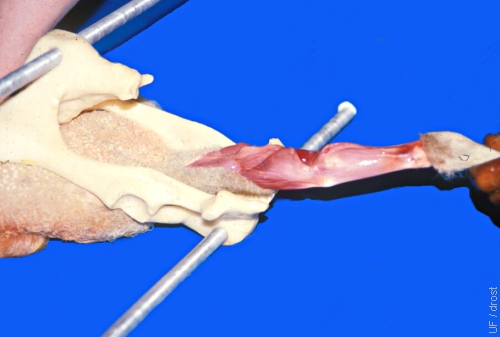
Fetotomy in Progress.
The dead lamb is in anterior presentation, and in a dorso-sacral position. The head has been amputated. A circular skin incision was made proximal to the carpus and a longitudinal incision was made along the medial aspect of the limb. Then the skin was separated from the underlying muscle and fascia, in the process of a subcutaneous fetotomy.
Smith MC (2006)
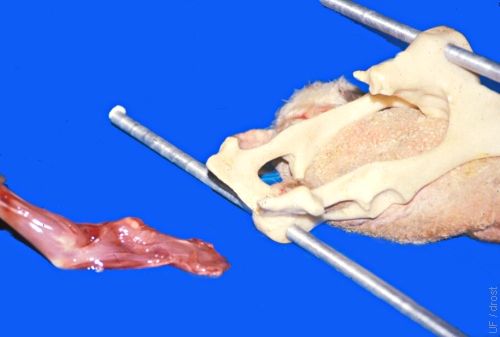
Front Leg Removed.
Subcutaneous fetotomy of the front limb. The skin has been undermined and freed from the bones and muscles of the limb. Shown is the severed limb including the scapula.
Smith MC (2006)
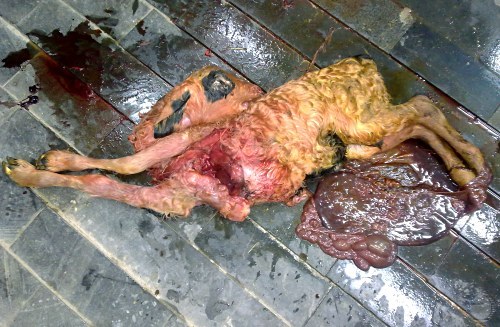
Decapitation by Fetotomy.
The laterally retained fetal head has been decapitated [per fetotomy] to decrease the size of the fetal mass and to enable delivery of the remainder of the body per vaginam.
Mogheiseh A (2013)
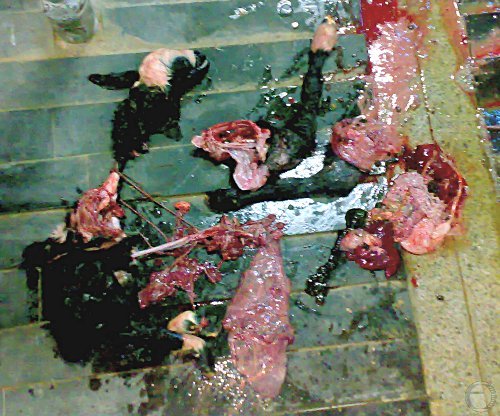
Total Fetotomy.
Total fetotomy into five pieces to enable delivery per vaginam.
Mogheiseh A (2013)
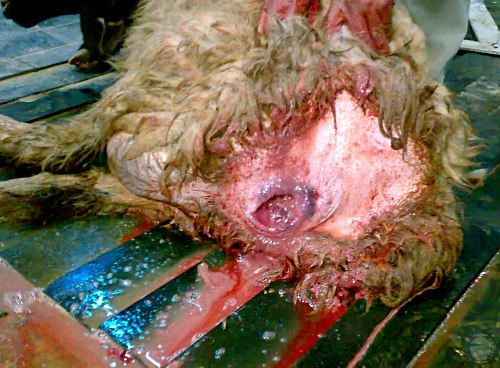
Trauma to the Birth Canal.
Trauma to the vestibule and the vulva of the ewe as a result of the fetotomy procedure. Extensive bruising.
Mogheiseh A (2013)
